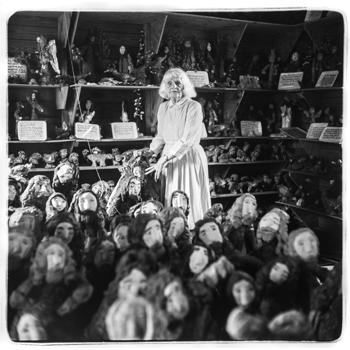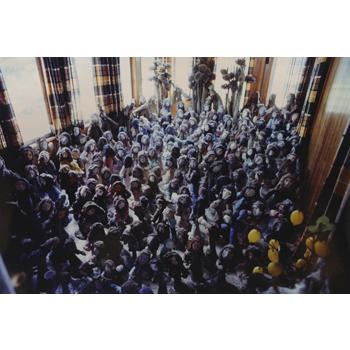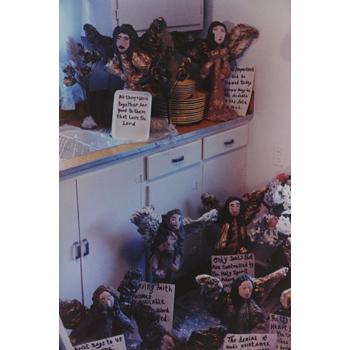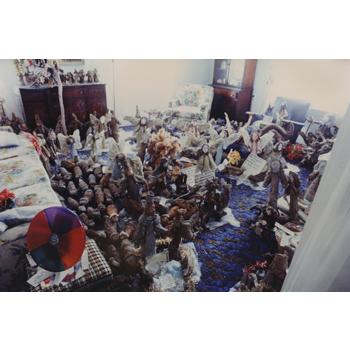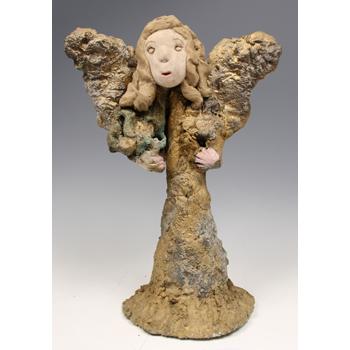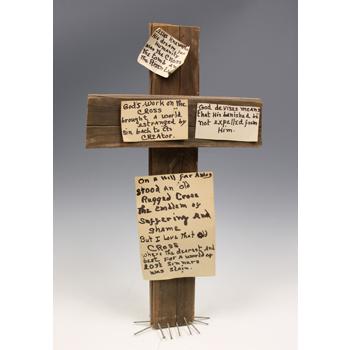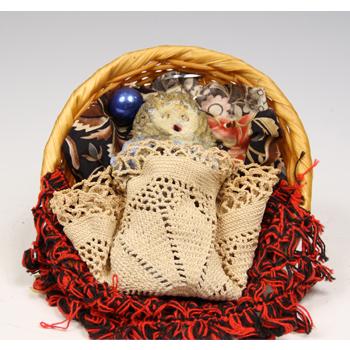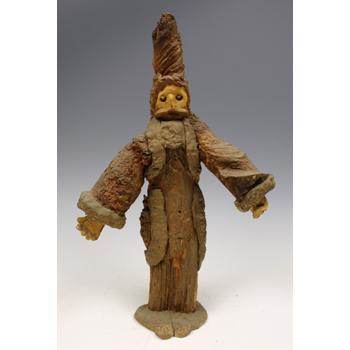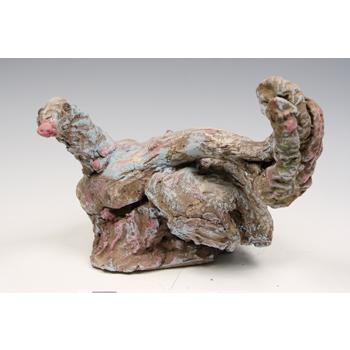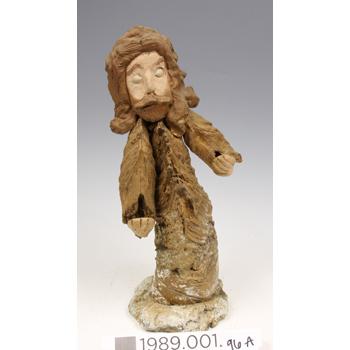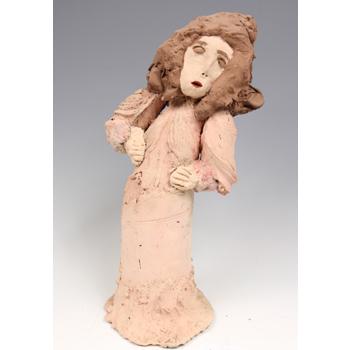Annie Hooper
(1897-1986)
Roger Manley, Director of the Gregg Museum of Art and Design came upon Annie Hooper’s environment on Cape Hatteras, NC when he was a very young man on break from college. He developed a relationship with Hooper over the years and received the collection upon her death. Annie Hooper began to create her environment after returning from a prolonged mental health treatment. Her primary materials were driftwood, putty, and house paint. Later, she incorporated shells and cement. She actively made art for over 40 years and arranged 300 Biblical scenes in her home. She is recognized as being particularly important as an environment created by a woman.
Sense each Bible vignette was installed in her home, her collection was documented by room by room, which helped maintain the authenticity of her story. All combined, there are 1,981 sculptures, notecards, and hand created signage. In 2017 and 2018, the art was gifted to nine museums including High Museum of Art (GA), American Folk Art Museum (NY), Cameron Art Museum (NC), Hickory Art Museum (NC) and John Michael Kohler Arts Center. The collection was conserved by International Artifacts. A small collection of archival materials are being cared for by SPACES Archives.
